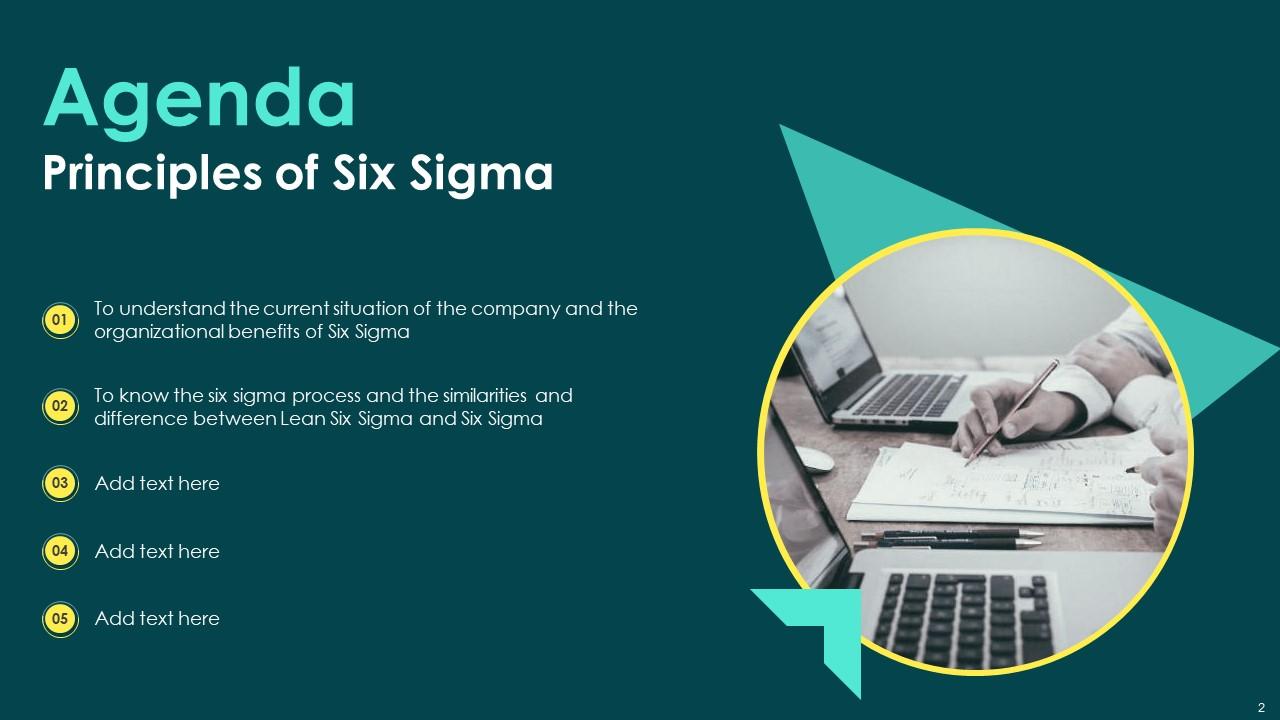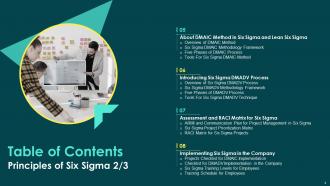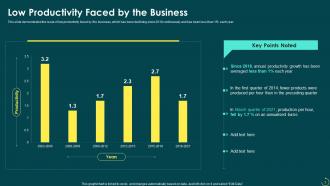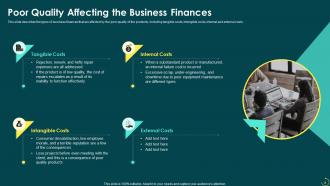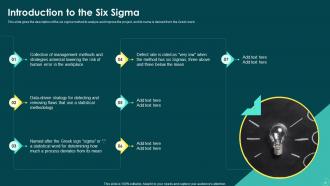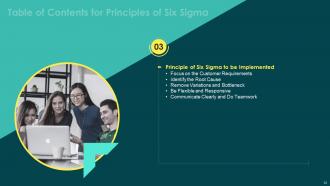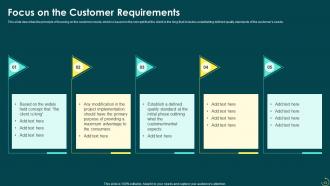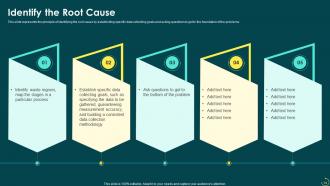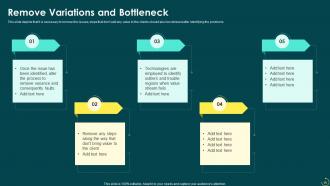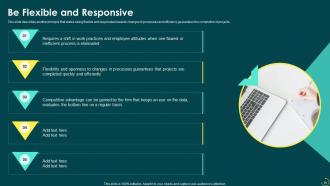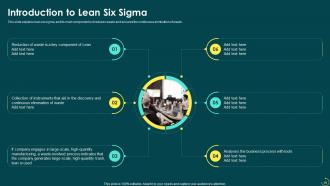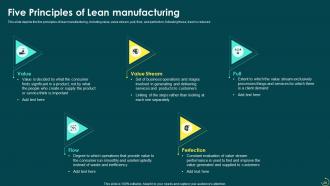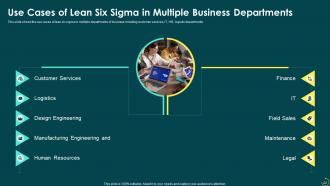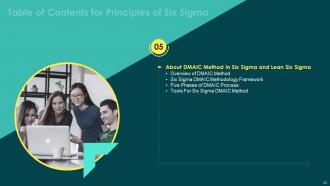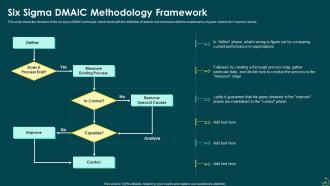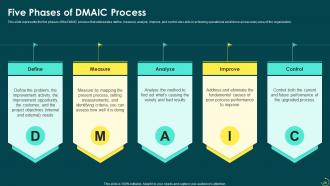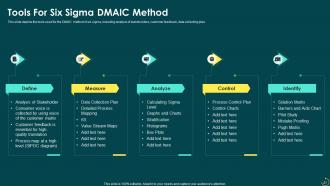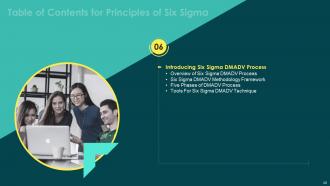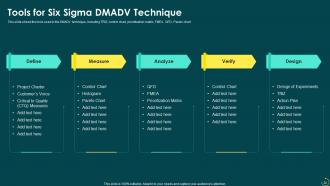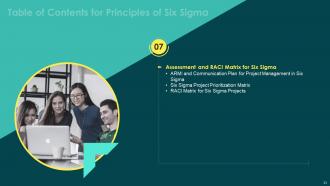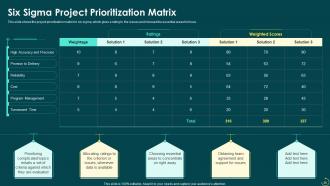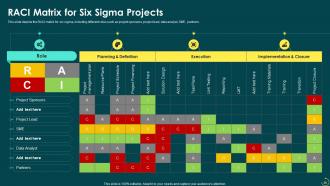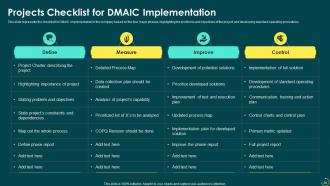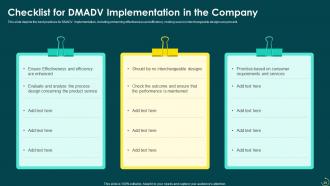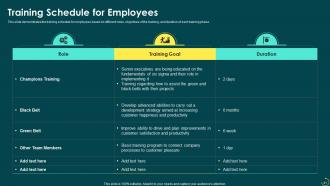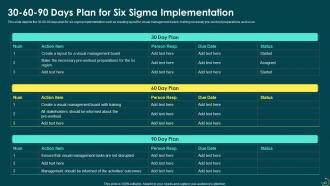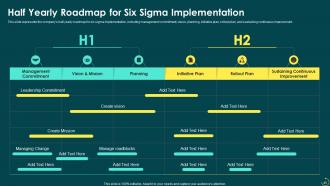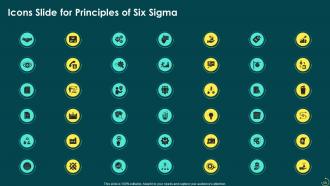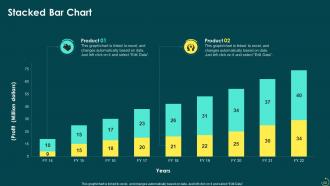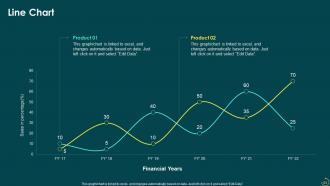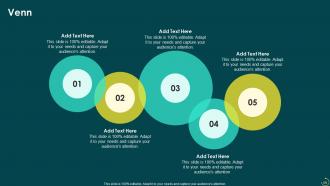Principals Of Six Sigma Powerpoint Presentation Slides
Six Sigma is a data-driven methodology consisting of tools and processes for defining and evaluating each step; also, it outlines strategies for increasing bottom-line profit, increasing efficiency in a corporate structure, and improving process quality. This PowerPoint presentation gives a brief idea about the current situation in the organization and existing issues to understand the need for Six Sigma. In this Principles of Six Sigma PowerPoint Presentation, we have covered the overview of Six Sigma, how it is beneficial for the business, and the principles upon which it is based. Furthermore, this Six Sigma template includes ARMI and communication plan, prioritization matrix, and RACI matrix for project management. Moreover, this PPT caters implementation process, including a checklist, a training schedule for employees in the company, and an estimated budget. Lastly, this Six Sigma deck comprises a 30-60-90 days plan, roadmap, dashboard, and impact of Six Sigma implementation on the company. Download our 100 percent editable and customizable template, which is also compatible with google slides.
You must be logged in to download this presentation.
 Impress your
Impress your audience
Editable
of Time
PowerPoint presentation slides
This complete presentation has PPT slides on wide range of topics highlighting the core areas of your business needs. It has professionally designed templates with relevant visuals and subject driven content. This presentation deck has total of sixty slides. Get access to the customizable templates. Our designers have created editable templates for your convenience. You can edit the color, text and font size as per your need. You can add or delete the content if required. You are just a click to away to have this ready-made presentation. Click the download button now.
People who downloaded this PowerPoint presentation also viewed the following :
Content of this Powerpoint Presentation
Slide 1: This slide introduces Principles of Six Sigma. State your company name and begin.
Slide 2: This is an Agenda slide. State your agendas here.
Slide 3: This slide presents Table of Content for the presentation.
Slide 4: This is another slide continuing Table of Content for the presentation.
Slide 5: This is another slide continuing Table of Content for the presentation.
Slide 6 : This slide highlights title for topics that are to be covered next in the template.
Slide 7: This slide displays Low Productivity Faced by the Business.
Slide 8: This slide represents Poor Quality Affecting the Business Finances.
Slide 9: This slide highlights title for topics that are to be covered next in the template.
Slide 10: This slide gives the description of the six sigma method to analyze and improve the project.
Slide 11: This slide depicts the benefits of six sigma for businesses, including reduced waste, boosting productivity, reduced legal risks, etc.
Slide 12: This slide highlights title for topics that are to be covered next in the template.
Slide 13: This slide describes the principle of focusing on the customer needs.
Slide 14: This slide represents the principle of identifying the root cause by establishing specific data collecting goals.
Slide 15: This slide depicts that it is necessary to remove the issues/steps that don’t add any value.
Slide 16: This slide describes another principle that states being flexible and responsive towards changes in processes.
Slide 17: This slide shows the last principle that states employees should do teamwork, communicate clearly, and should be kept updated.
Slide 18: This slide highlights title for topics that are to be covered next in the template.
Slide 19: This slide explains lean six sigma, and its main component as it reduces waste and ensures the continuous elimination of waste.
Slide 20: This slide depicts the five principles of lean manufacturing, including value, value stream, pull, etc.
Slide 21: This slide describes the key elements for lean six sigma such as tools & techniques, process, and methods.
Slide 22: This slide displays Use cases of lean six sigma in multiple business departments.
Slide 23: This slide highlights title for topics that are to be covered next in the template.
Slide 24: This slide depicts the overview of DMAIC methodology, which includes five phases that aid in problem-solving and quality improvement strategy.
Slide 25: This slide showcases Six Sigma DMAIC Methodology Framework.
Slide 26: This slide represents the five phases of the DMAIC process that abbreviates define, measure, analyze, improve, and control.
Slide 27: This slide depicts the tools used for the DMAIC method of six sigma, including analysis of stakeholders, customer feedback, data collecting plan.
Slide 28: This slide highlights title for topics that are to be covered next in the template.
Slide 29: This slide represents the overview of the six sigma DMADV process in which the last two phases are design and verify.
Slide 30: This slide demonstrates the framework of the six sigma DMADV methodology.
Slide 31: This slide represents the five phases of the DMADV process, including the define, measure, analyze, etc.
Slide 32: This slide showcases Tools for Six Sigma DMADV Technique.
Slide 33: This slide highlights title for topics that are to be covered next in the template.
Slide 34: This slide presents ARMI and Communication Plan for Project Management in Six Sigma.
Slide 35: This slide shows Six Sigma Project Prioritization Matrix.
Slide 36: This slide depicts the RACI matrix for six sigma, including different roles such as project sponsors, project lead, data analyst, etc.
Slide 37: This slide highlights title for topics that are to be covered next in the template.
Slide 38: This slide represents Projects Checklist for DMAIC Implementation.
Slide 39: This slide showcases Checklist for DMADV Implementation in the Company.
Slide 40: This slide describes the five training levels for six sigma: white belt, yellow belt, green level, etc.
Slide 41: This slide demonstrates the training schedule for employees based on different roles, objectives of the training, and duration of each training phase.
Slide 42: This slide highlights title for topics that are to be covered next in the template.
Slide 43: This slide showcases 30-60-90 Days Plan for Six Sigma Implementation.
Slide 44: This slide highlights title for topics that are to be covered next in the template.
Slide 45: This slide presents Half Yearly Roadmap for Six Sigma Implementation.
Slide 46: This slide highlights title for topics that are to be covered next in the template.
Slide 47: This slide displays Increased Revenue Growth Post Six Sigma Implementation.
Slide 48: This slide highlights title for topics that are to be covered next in the template.
Slide 49: This slide demonstrates the dashboard for sales monitoring of six sigma projects.
Slide 50: This slide contains all the icons used in this presentation.
Slide 51: This slide is titled as Additional Slides for moving forward.
Slide 52: This slide represents Stacked Bar chart with two products comparison.
Slide 53: This slide describes Line chart with two products comparison.
Slide 54: This is About Us slide to show company specifications etc.
Slide 55: This slide contains Puzzle with related icons and text.
Slide 56: This slide provides 30 60 90 Days Plan with text boxes.
Slide 57: This slide displays Mind Map with related imagery.
Slide 58: This is Our Target slide. State your targets here.
Slide 59: This slide depicts Venn diagram with text boxes.
Slide 60: This is a Thank You slide with address, contact numbers and email address.
Principals Of Six Sigma Powerpoint Presentation Slides with all 65 slides:
Use our Principals Of Six Sigma Powerpoint Presentation Slides to effectively help you save your valuable time. They are readymade to fit into any presentation structure.
FAQs
Six Sigma is a methodology used to analyze and improve a project's quality and efficiency. Its benefits for businesses include reduced waste, improved productivity, and reduced legal risks.
The five principles of lean manufacturing are value, value stream, flow, pull, and perfection. These principles are related to Six Sigma as they both aim to eliminate waste and improve efficiency in business processes.
DMAIC (Define—Measure—Analyze—Improve—Control) is a methodology used in Six Sigma for problem-solving and quality improvement. Its five phases include Define, Measure, Analyze, Improve, and Control.
The training levels in Six Sigma are white belt, yellow belt, green belt, black belt, and master black belt. The training schedule for employees varies based on their roles and objectives and each training phase's duration.
The 30-60-90 days plan for Six Sigma implementation is a structured approach to implementing Six Sigma in a business over a 90-day period. It helps businesses to prioritize and plan their Six Sigma implementation, ensuring that it is effective and efficient in improving their processes and quality.
-
The templates are handy and I can personalize them as per my needs. Glad to be your subscriber!
-
SlideTeam is my go-to resource for professional PPT templates. They have an exhaustive library, giving you the option to download the best slide!



